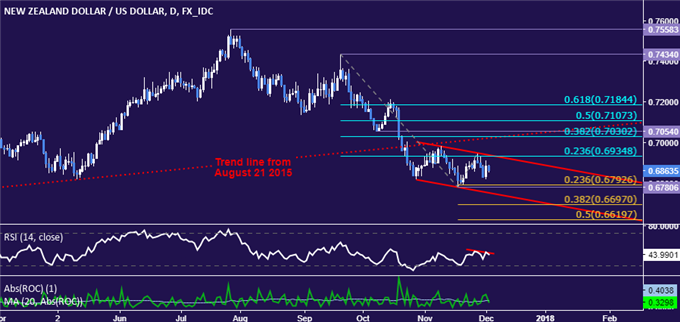To receive Ilya's analysis directly via email, please SIGN UP HERE
Talking Points:
- NZD/USD Technical Strategy: Pending short at 0.6895
- Kiwi Dollar down trend has slowed but the dominant still bias favors losses
- Upswing sought for improved risk/reward parameters to enter short position
The dominant New Zealand Dollar trend continues to favor the downside against its US counterpart despite an apparent deceleration in the pace of decline. The steeper down move from the late September swing high seems to have ended but a shallower series of lower highs and lows remains in play.
From here, a daily close below the November 17 low at 0.6781 exposes range floor support at 0.6752, followed by the 38.2% Fibonacci expansion at 0.6697. Alternatively, a push above 0.6935 (23.6% Fib retracement, channel top) exposes the 0.7030-54 area (38.2% retracement, October 9 low, former trend line support).
Risk/reward considerations argue against taking a short trade at current levels. With that in mind, a short entry order has been established to sell NZD/USD at 0.6895. If triggered, the trade will initially target 0.6793 and carry a stop-loss activated on a daily close above 0.6946.
Have a question about trading NZD/USD? Join a free Q&A webinar and ask it live!








